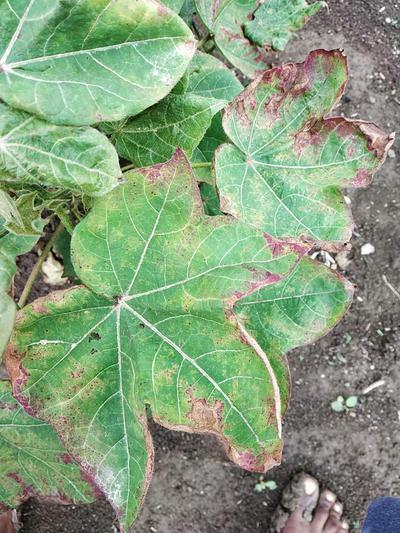Cotton Leafhopper Jassids
Amrasca biguttula
Insect
In a Nutshell
- Yellowing and upward curling of leaves.
- Brownish discoloration starting from margins in later stages.
- Shedding of dried leaves.
- Stunted growth.
Can also be found in
Symptoms
The affected leaves turn yellowish then brownish starting from the margins and migrating to the midrib. Leaves gradually show signs of curling before drying completely and shedding. Severe incidences result in “hopper burn” injury and death of leaves, eventually leading to the stunting of young plants. The fruiting capacity of the plants infested at later stages of growth is significantly affected and in many cases causes lower yields and poor quality of the fibers.
Recommendations

Organic Control
Generalist predators of cotton leaf hoppers are the common green lacewing (Chrysoperla carnea), species of the genus Orius or Geocoris, some species of Coccinellids and spiders. Make sure to promote those species and avoid use of broad-scale insecticides. Apply Spinosad (0.35ml/l) when first symptoms occur.

Chemical Control
Always consider an integrated approach with preventive measures together with biological treatments if available. Insecticide formulations based on cypermethrin (1 ml/l), sulfoxaflor, chlorpyrifos (2.5 ml/l), dimethoate, lambdacyhalothrin (1 ml/l) or chlorantraniliprole + lambda-cyhalothrin (0.5 ml/l) can be applied. They may however also affect natural predators of leafhoppers and should therefore only be applied in severe cases and in a timely manner. Seed treatment with insecticides can also help to suppress leaf hopper populations on the crop for 45-50 days.
What caused it?
Damage is caused by the nymphs and adults of Amrasca insect. They which suck the plant sap and introduce salivary toxins which are capable of damaging the tissue and impairing photosynthesis. Moderate to high temperatures and humidity ranges of 21 to 31°C and 55 to 85% respectively, encourages the presence and activities of this insect. Low temperatures and strong winds inhibit their activities.
Preventive Measures
- Plant resistant or tolerant varieties (several are available on the market).
- Monitor the orchard regularly for signs of cotton leaf hoppers.
- Maintain a balanced fertilization and especially do not apply excessive nitrogen.



